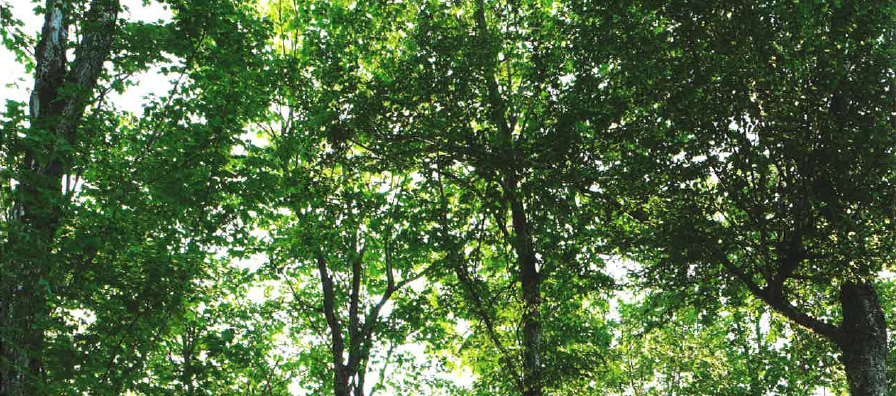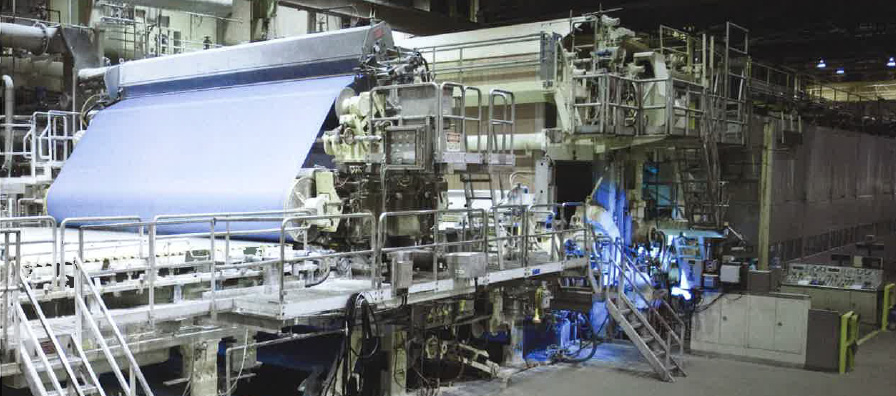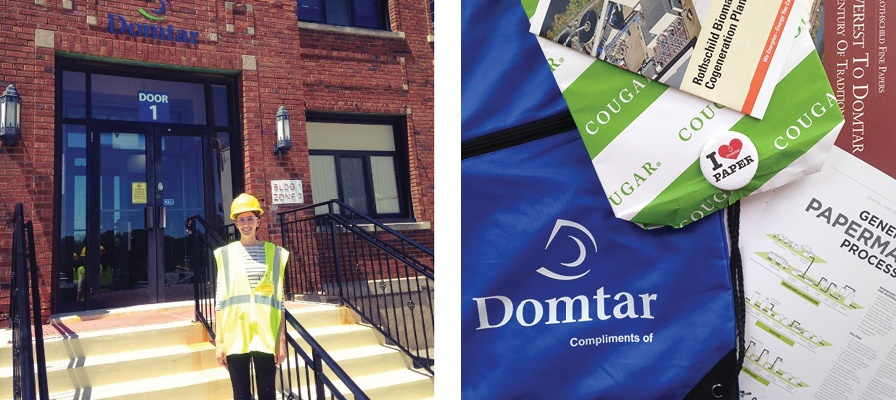A Designer's Journey in Paper: Part 2
October 13, 2016 at 5:49 PM

As mentioned in part 1 of this series, I've been exploring what there is to know about paper and its origins. As a print designer, I took it upon myself to learn more about paper so that I can make better and more informed decisions that will influence not only my designs, but chosen substrates as well. I knew I wanted to learn from a paper mill that had a lot of history, makes a good quality sheet of paper and make sustainable choices that positively impacts our environment.
After careful consideration of my agenda, I ultimately chose to visit the Domtar paper mill in Rothschild, Wisconsin for 4 main reasons:
- Domtar is highly committed to forest sustainability
They support forest landowners on their journey to becoming sustainable forest managers and put back into the earth more than they take out; the water they treat is released cleaner and better than when it was taken in. - Domtar self-generates over 70% of their electricity
With the addition of opening their biomass cogeneration plant in 2013, they are not only able to produce enough electricity to not only provide steam to the mill, but to supply 40,000 homes with electricity as well. Better yet, the plant has created jobs for the community and provided the state of Wisconsin with more green power than ever before. - The Rothschild mill has been producing paper for more than 100 years
It's easy to trust something that has been working for so long. Though the purpose for paper hasn't changed, the procedures and standards have been elevated over the years as the employees of Domtar have developed more sustainable harvest practices. - Employees of the mill participate in an annual river cleanup
At NeigerDesign we value giving back to our community and equally value companies who share our mindset. For more than ten years Domtar has been participating in the Wisconsin River Cleanup Project to help preserve the river during which over 250 individuals collect garbage to ensure that resource is kept clean.
It's obvious that Domtar gives back to their employees, community, and earth. Their interactive website project "The Paper Trail" allows customers to see exactly how their paper order will affect the environment, community and economy. What I love most about this tool is that it educates consumers about how paper production isn't as bad for the earth as we are led to believe it is and the information is presented in an easy-to-understand and relatable way. The bottom line is: with the technology used today as seen at the Rothschild mill, paper production has advanced to the point of being very sustainable.

Domtar's "PAPERbecause" website educates its visitors on how the production of paper can positively impact our lives. Accompanying informational articles are interactive quizzes, infographics and videos explaining the many benefits of continuing to produce paper. Although there are many sources claiming that producing and using paper is wasteful and negatively impacts our environment, Domtar makes sure to combat these statements with statistics that prove otherwise. A few statements that stood out to me on their website are:
- Annual net growth of U.S. forests is 36 percent higher than the volume of annual tree removals.
- The pulp and paper industry largely uses renewable energy sources that are considered carbon neutral to generate steam and electricity.
- Paper is natural and plant-based. It is sustainable, renewable and 100% recyclable.
- The typical North American pulp and paper mill returns 90% of the water to the source after treatment. The other 10% leaves with the paper or is evaporated.

I try to make choices that positively impact the environment and am always seeking new ways to do so. Visiting Domtar helped assure me that because of companies like itself, that produce materials we can feel good about using, my practices as a print designer aren't as bad as the media can make them out to be. With this information, I hope to educate others about how we can ensure we are making the right decisions.
So how could I continue my exploration of paper and sustainable practices? While I had already learned so much, it felt like only the beginning of my journey. Luckily, it kind of was�I had recently been invited to visit a mill in Sweden to learn about paperboard. I felt good knowing that I would be going into that trip with a little more knowledge from my visit to Rothschild.
Comments
Questions or comments? Join the conversation!